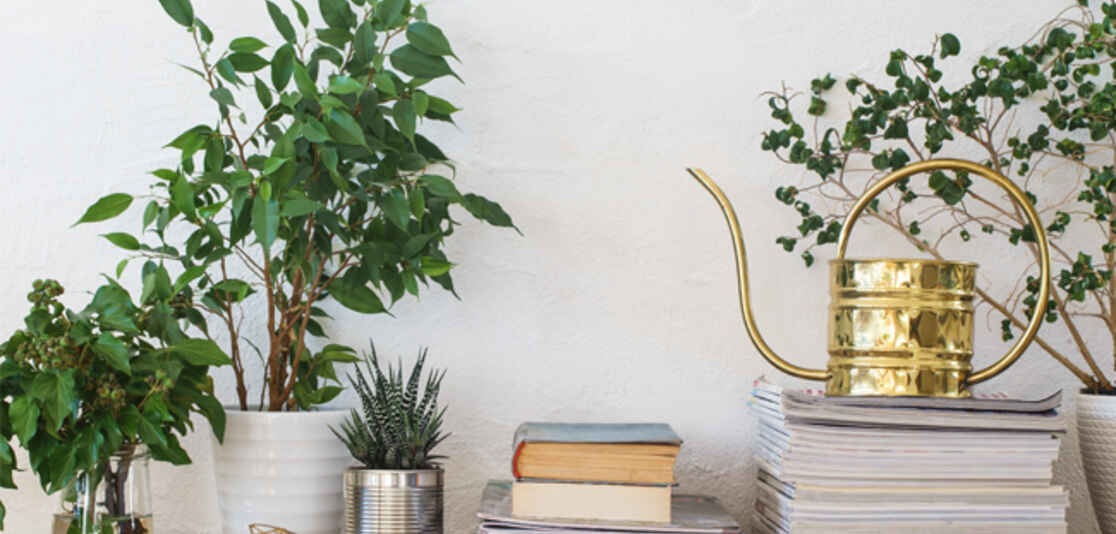When it comes to indoor plants, we’re either loving them or killing them. But with a little know-how, some TLC, and some dedication, your indoor plants will thrive all year round.
Here are 7 tips to help your indoor plants get into shipshape today:
1. Positioning
Place your plants in an area that gets good ventilation and natural light, but without any direct sunlight. Keeping your plants out of direct sunlight protects them from extreme fluctuations in heat and reduces the risk of water loss and stress.
2. Watering
How much you water a plant is often the difference between a thriving and a dying plant. The best way to judge whether a plant is in need of watering is when its leaves start to wilt. Problem is, the same symptom are a sign that it is being over watered. Once a plant has root rot from over watering, it can be very difficult for it to recover. For most plants, the soil should be kept moist but not saturated – use your finger as a guide; if it feels dry an inch or so below the surface, it needs a drink.
3. Pot Size
Make sure the pot you choose allows room for your plant to grow. If you’re transferring your plant into a large heavy feature pot, it’s a good idea to keep your plant in its plastic pot within the feature pot. This will help reduce the risk of overwatering and will make re-potting at a later date much easier. Also, avoid using pots without holes in the bottom, as the excess water has nowhere to escape.
5. Cleaning
Indoor plants don’t get to enjoy a rain wash like outdoor plants, so they do need some regular cleaning. Wiping their leaves with a clean damp cloth once a month, helps to keep them free of dust, allows them to be more receptive to photosynthesis and of course keeps them looking shiny and healthy.
For plants with delicate leaves like palms and ferns, take them outside and water them over with a hose, or pop them into the shower recess for quick rinse. Better still, leave them out on a rainy day so they receive all the added benefits that only rainwater provides.
6. Feeding
It’s important that indoor plants are fertilised as the nutrition available to them in potting mix is restricted. Always choose the best potting mix you can afford - ideally one with a slow release fertiliser and water crystals. You can also add a liquid fertiliser, like blood and bone with seaweed to your watering can once or twice a month. Re-pot your plants every one to two years to keep the potting mix fresh, or every six to nine months, if the mix includes a slow release fertiliser.
7. Rotating
Your indoor plants will truly benefit with a vacation outdoors every once in a while. For small and medium sized pots, set up a rotation system and mark it on your calendar. If you leave plants in their original plastic pots they arrived in from the nursery, you can easily place them inside decorative pots outside and change them as often as you like. Make sure the outside position is similar to their inside conditions. If a plant is not used to direct sunlight, it will struggle outdoors receiving the full strength of the sun.
